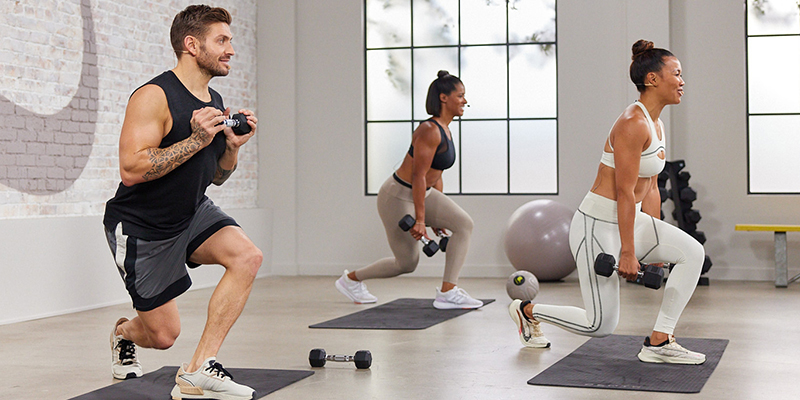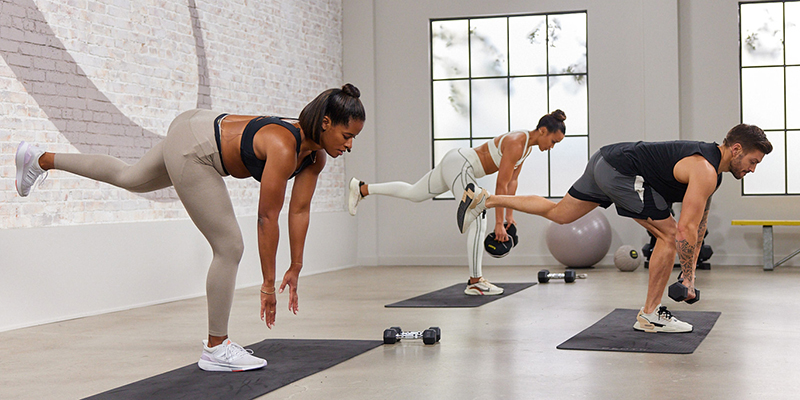How Functional Training Can Improve Your Everyday Life
Functional training has gained significant popularity in recent years, and for good reason. This approach to fitness focuses on exercises that mimic everyday activities, making it a practical choice for anyone looking to enhance their physical capabilities and overall well-being. This article will explore functional training, its benefits, and how it can improve your daily life in 2024.
Understanding Functional Training
At its core, functional training emphasizes movements relevant to daily tasks. Unlike traditional weightlifting, which often isolates specific muscle groups, functional training engages multiple muscle groups simultaneously. This method helps build strength, balance, coordination, and flexibility, which are crucial for performing everyday activities with ease.

Functional training incorporates a variety of exercises that mimic movements such as lifting, bending, pushing, and pulling. These exercises can include squats, lunges, kettlebell swings, and resistance band work. The goal is to prepare your body for real-life movements rather than focusing solely on aesthetics or the ability to lift heavy weights.
Enhancing Core Strength And Stability
One of functional training's primary benefits is its ability to strengthen the core. The core consists of the abdomen, lower back, and pelvis muscles. A strong core is vital for maintaining stability and balance in almost every daily activity, from standing up to picking up objects.
Core-strengthening exercises are often integrated into functional training routines. Planks and medicine ball throws engage multiple muscles while focusing on core stability. As you strengthen your core, you may find activities like bending down to tie your shoes or lifting groceries easier and more manageable.
Improving Balance And Coordination
Maintaining balance and coordination becomes increasingly important as we age to prevent falls and injuries. Functional training incorporates movements that require you to stabilize your body while performing various tasks. This can include exercises challenging your balance, such as single-leg deadlifts or stability ball exercises.
Enhancing balance and coordination through functional training can reduce the risk of falls and improve your performance in everyday activities. Whether walking on uneven surfaces, carrying heavy objects, or playing with your children, better balance and coordination can make these tasks safer and more enjoyable.
Boosting Overall Strength And Endurance
Functional training effectively builds overall strength and endurance, which can significantly impact daily life. Unlike traditional weightlifting, which often focuses on building muscle mass, functional training emphasizes the development of strength applicable to real-world tasks.
For instance, lifting weights off the ground or pushing a heavy object requires strength, stability, and coordination. Functional training prepares your body for these movements, making everyday tasks less strenuous. As your strength and endurance improve, you may be more capable of tackling household chores, playing sports, or engaging in outdoor activities without fatigue.
Enhancing Flexibility And Mobility
Flexibility and mobility are essential components of functional fitness. Functional training encourages a full range of motion in various joints, promoting flexibility and reducing the risk of injury. Many functional exercises involve dynamic movements that stretch and strengthen muscles simultaneously.

Incorporating exercises such as lunges with rotation or hip openers can enhance flexibility, making it easier to perform tasks that require bending, reaching, or twisting. Improved flexibility can also alleviate stiffness and discomfort, often accompanying sedentary lifestyles or ageing.
Supporting Joint Health
Joint health is critical to overall physical well-being, especially as we age. Functional training promotes joint stability and helps maintain proper alignment during movement. Strengthening the muscles surrounding your joints can reduce the risk of injuries and joint pain.
For example, functional training can improve knee stability through exercises like step-ups or lateral lunges, which strengthen the muscles around the knee joint. This can be particularly beneficial for individuals who experience knee discomfort or are recovering from injuries. Functional training can help you maintain an active lifestyle for years by fostering joint health.
Encouraging Mind-Body Connection
Functional training is not only about physical strength; it also emphasizes the mind-body connection. Awareness of how your body moves and engages during exercises can improve overall body awareness and control. This awareness translates to daily activities, allowing you to perform tasks more efficiently and safely.
Practising functional movements encourages mindfulness as you focus on executing each exercise. This can lead to a greater understanding of your body's capabilities and limitations. Improved body awareness can help prevent injuries by making you more conscious of your movements, whether playing sports or simply getting out of a chair.
Making Fitness Enjoyable And Accessible
One of the appealing aspects of functional training is its versatility. It can be adapted to suit various fitness levels, making it accessible to beginners and seasoned athletes. You don't need expensive equipment or a gym membership for functional training. Many exercises can be performed at home using body weight, resistance bands, or simple household items.
Furthermore, functional training can be enjoyable and engaging. By incorporating a variety of movements and exercises, you can keep your workouts fresh and exciting. This variety can help you stay motivated and committed to your fitness journey, leading to a healthier and happier lifestyle.
Incorporating Functional Training Into Your Routine
Integrating functional training into your regular fitness routine doesn’t have to be complicated. Start by including a few functional exercises in your current workout regimen. Aim for at least two to three sessions per week, gradually increasing the intensity and complexity of the movements as you become more comfortable.
Consider working with a certified trainer or joining a functional training class to learn proper techniques and form. This guidance can help you maximize the benefits of your workouts while minimizing the risk of injury. As you progress, you can tailor your functional training program to align with your goals and lifestyle.
Conclusion
Functional training is more than just a fitness trend; it's a practical approach to improving your everyday life. By enhancing strength, balance, coordination, and flexibility, functional training prepares your body for the demands of daily activities. In 2024, as people prioritize health and well-being, integrating functional training into their routine can lead to a more active, fulfilling, and injury-free life.
Whether you're a busy professional, a parent, or simply looking to stay fit, functional training offers a valuable solution to enhance your physical capabilities. Embrace the movement, and the benefits extend beyond the gym, positively impacting your overall quality of life.



















